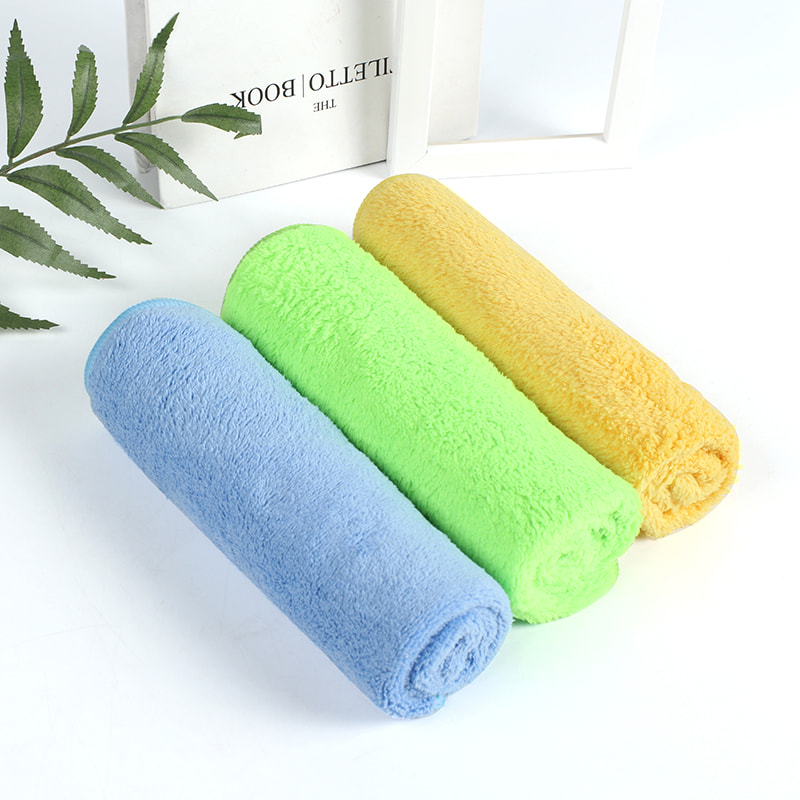We are a national high-tech enterprise. At present, there are many kinds of self-woven and cooperatively processed fabrics, including microfiber warp-knitted towel cloth, weft-knitted towel cloth, coral fleece, etc.
Designate a Specific Area: Select a dedicated storage area within your bathroom or utility space that is easily accessible yet out of the way of regular activities. This could be a linen closet, cabinet, or a designated shelf. By designating a specific area, you ensure that towels are always in one place, promoting organization and ease of access during cleaning tasks.
Use Hanging Hooks or Bars: Install sturdy hooks or towel bars in convenient locations. Consider placing hooks near sinks, showers, or on the back of doors. This approach not only optimizes vertical space but also allows towels to air dry effectively between uses. Proper drying helps prevent odors and mildew, maintaining the cleanliness and freshness of the towels.
Fold Neatly: Adopt a consistent folding method that fits the dimensions of your storage space. Neatly folded towels not only look organized but also make it easier to grab a towel quickly when needed. Stack folded towels vertically rather than horizontally to maximize space utilization and visibility.
Consider Towel Racks: Invest in quality towel racks with multiple bars or tiers. This setup allows you to categorize towels based on their usage—such as one rack for drying towels and another for clean towels ready for use. Separating towels by function minimizes cross-contamination and enhances workflow efficiency during cleaning routines.
Use Storage Baskets or Bins: Utilize labeled baskets or clear bins to further organize towels by type or cleaning area. Labeling or color-coding bins (e.g., using blue bins for glass cleaning towels and green bins for general surface towels) helps users quickly identify the right towel for specific tasks. Transparent bins provide visibility and simplify inventory management.
Rotate Towels Regularly: Implement a rotation system to evenly distribute wear and tear among towels. Rotate towels from front to back or top to bottom regularly to ensure all towels are used and cleaned on a consistent basis. This practice extends the lifespan of towels and maintains their effectiveness in cleaning tasks.
Keep Towels Dry: Ensure towels are completely dry before storing them to prevent mustiness and bacterial growth. Hang towels on hooks or bars in a well-ventilated area until fully dry. If using bins or drawers, ensure towels are not stacked tightly together and have sufficient airflow around them.
Use Washable Liners: Line drawers or bins with washable liners to protect towels from dust, lint, or residue that may accumulate over time. Liners also simplify cleaning of storage compartments, ensuring hygienic conditions for stored towels and reducing the need for frequent washing.
Label or Color-Code: Implement a labeling or color-coding system to differentiate towels based on their intended use or area of the home. For example, use color-coded tags or labels to distinguish towels for bathroom surfaces, mirrors, or floors. Clear labeling enhances organization, minimizes confusion, and streamlines the selection of towels during cleaning tasks.
Keep Away from Contaminants: Store towels away from potential contaminants such as cleaning chemicals, dirty surfaces, or moisture-prone areas. Ensure towels are stored in a clean, dry environment to maintain their cleanliness and effectiveness. Consider storing towels in a separate area from other cleaning supplies to prevent cross-contamination.
3PK Antibacterial Coral Fleece/Kitchen Cleaning/Pet Towel


 English
English Espaol
Espaol русский
русский عربي
عربي 简体中文
简体中文
















